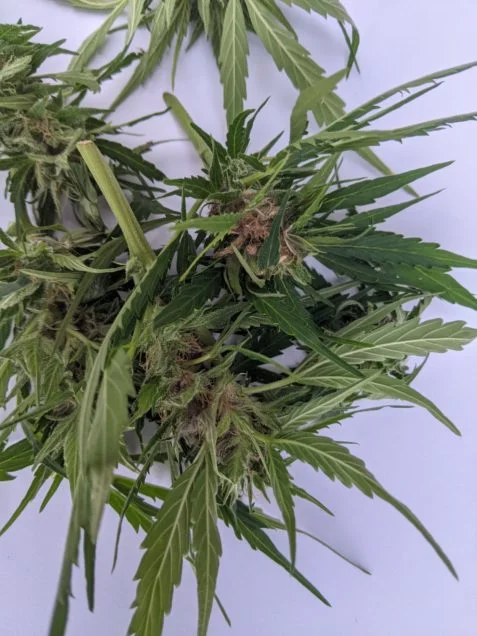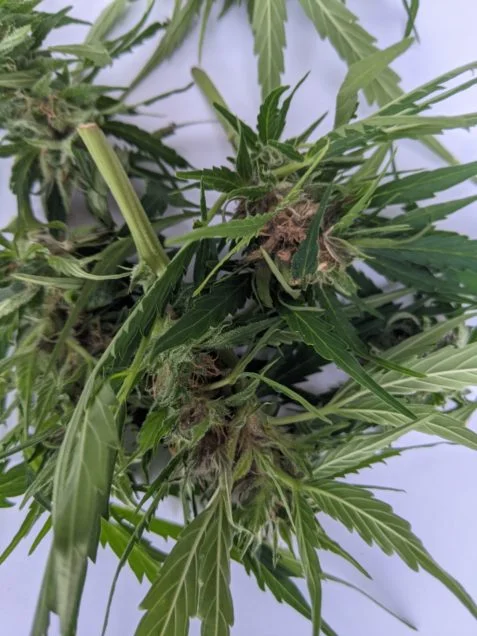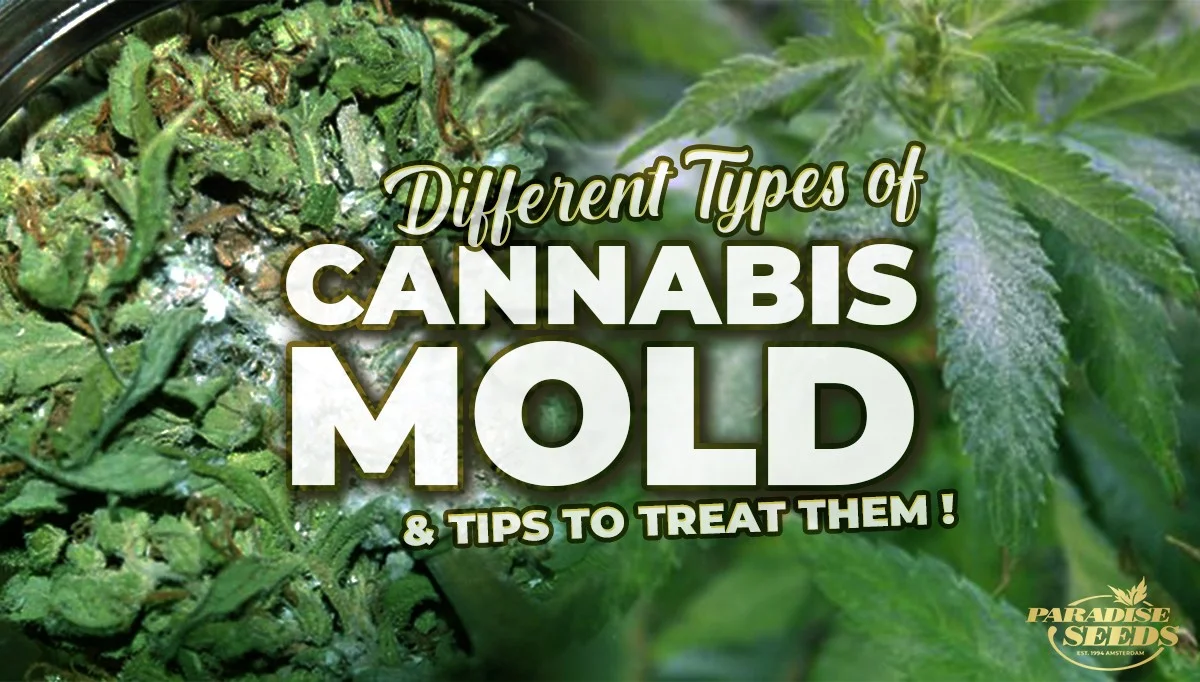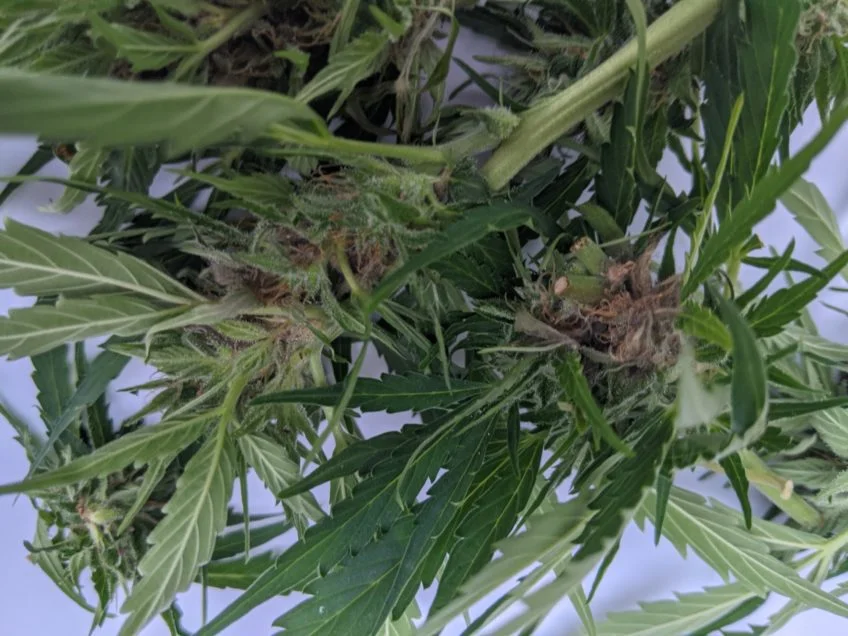Outdoor cannabis crops which have thrived over the summer are suddenly vulnerable to mold as humidity levels rise and daytime temperature highs are contrasted by night time lows. Mold can show itself in many forms (and a sickening array of colors) but what are the most common types of cannabis plant mold and what steps can you take to avoid it?
 Botrytis (Gray Mold, Bud Mold)
Botrytis (Gray Mold, Bud Mold)
Botrytis is the most common type of mold to affect weed plants and there are believed to be about 30 species in the family. Also known as ‘gray mold’, it is a very efficient enemy, thriving in high moisture environments and clinging to wet surfaces, gaining access to plants by exploiting their vulnerabilities – targeting any wounds and lesions or older bits of the plant. Botrytis has millions of microscopic spores that spread via wind (or grower induced plant movement) and water dispersal and will often spread to surrounding plants.
White Powdery Mildew
White powdery mildew (aka WPM) is another common cannabis plant mold issue. It is usually first noticed when, at a glance, it looks as though someone carrying a bag of flour or icing sugar has brushed past your plant, leaving leaves with a sprinkle or patches of white discolor. White powdery mildew thrives in grow spaces with a high humidity content and will affect weed plants in the veg stage as well as flowering. The leaves of affected plants will start to discolour and wilt.
 Preventing Cannabis Mold – Tips
Preventing Cannabis Mold – Tips
Unfortunately, for the outdoor weed grower at least, Mother Nature has a big part to play in deciding the climactic and environmental conditions which allow cannabis mold to thrive. If you are at risk, we suggest you read our guide How to prevent Cannabis Bud Mold, but here’s a simple check list to help prevent it.
Conditions Mold loves:
- Poor air circulation.
- Surface moisture on plants.
- High air humidity.
Conditions Mold hates:
- A clean growing area without dead plant matter and debris on the ground.
- Good airflow – spacing plants out so leaves don’t touch and thinning out plant leaves as harvest approaches are good preventative measures.
- Dry surfaces. Difficult to achieve with outdoor growing but, growers will try – everything from transparent plastic covers to protective tarpaulins.
Homemade Mold Treatments
While there are many mold treatment products on the market, the following suggestions are based on elements you can find in the home kitchen and are safe to use:
Milk
Around 20 years ago, a Brazilian scientist made the discovery that milk could be an effective anti -mildew and mold treatment as it is known to kill off micro-organisms and also provides beneficial potassium phosphate which boosts plant defenses. While trials of this theory have focused on alternative crops, some weed growers swear by the milk treatment, although the solution should be weak as there is a suggestion that proteins and sugars in the milk can actually induce botrytis in flowering plants.
Recipe: 90-100 ml x milk (semi-skimmed preferable) to 1 x liter of water.
Bicarbonate of Soda
This common kitchen item has a range of uses outside baking and while some of the claims about bicarbonate of soda killing mold are as much wishful thinking as evidence based, what it does do is make the pH of plants (and leaf surfaces, when sprayed) more alkaline making a less hospitable environment for mold to grow.
Recipe: Add 1 x table spoon of bicarbonate of soda to 1 x liter of water.
For treating mold in the veg stage (such as powdery mildew), making up a solution and spraying it on the leaves is a good way to go, but once your plants are in bud, you really want to avoid this as it will probably impact on taste. We know the pungency of an Original Cheese plant is acceptable, but buds sprayed with milk is probably not the terpene profile boost you are really looking for… Therefore, if your plants are already in bud, then add the solution to a feed instead. Some outdoor growers who grow weed in environments where mold is a common problem will even do this as a preventative measure in the first few weeks of flowering).



